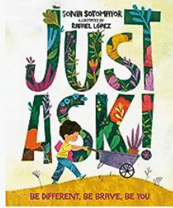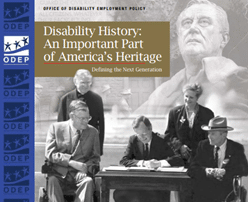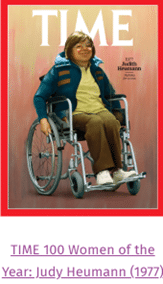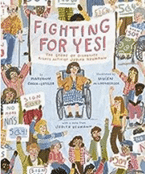By Silvia Steele
Access & Inclusion Specialist
This year marks the 50th anniversary of the passage of the Rehabilitation Act of 1973. The Rehabilitation Act banned exclusion and discrimination of people with disabilities in federally funded programs. This was a historical shift in perspective with the law recognizing that barriers in society are what deny people opportunities, not their disabilities. This law predated the Americans with Disabilities Act (ADA) which prevents discrimination on the basis of disability in employment, state and local government, public accommodations, commercial facilities, transportation, and telecommunications. (ADA.gov) It is important that adults and children learn about the history of the disability rights movement, and families have conversations about respecting diversity, and human rights.

In the book, Just Ask, author and United States Supreme Court Justice Sonia Sotomayor celebrates the different abilities children (and people of all ages) have. This book is a great conversation starter for children who have questions about disabilities.

People with disabilities in the U.S. represent all races, classes, and cultures. Yet, many people are unaware of the history of the disability movement. The United States Department of Labor-Office of Disability Policy provides an overview of major milestones in disability history on their website.

Judy Heumann, a disability rights advocate, fought for the passage of the Rehabilitation Act, after years of facing discrimination due to her own disability. Judy contracted polio at the age of two and was never able to walk again. She was initially denied the right to attend school and her family fought to keep her out of an institution. After graduating from college in the 1970’s, the NYS Board of Education refused to give Judy a teaching license because they feared she could not help evacuate students or herself in case of fire. She sued and went on to become the first teacher in the state to use a wheelchair.

Throughout her life, Judy was instrumental in developing and implementing national disability rights legislation. Sadly, she passed away this year, but her legacy lives on. Children can learn about her remarkable life in the books, Rolling Warrior (grades 5-9) and Fighting for Yes (young readers)
